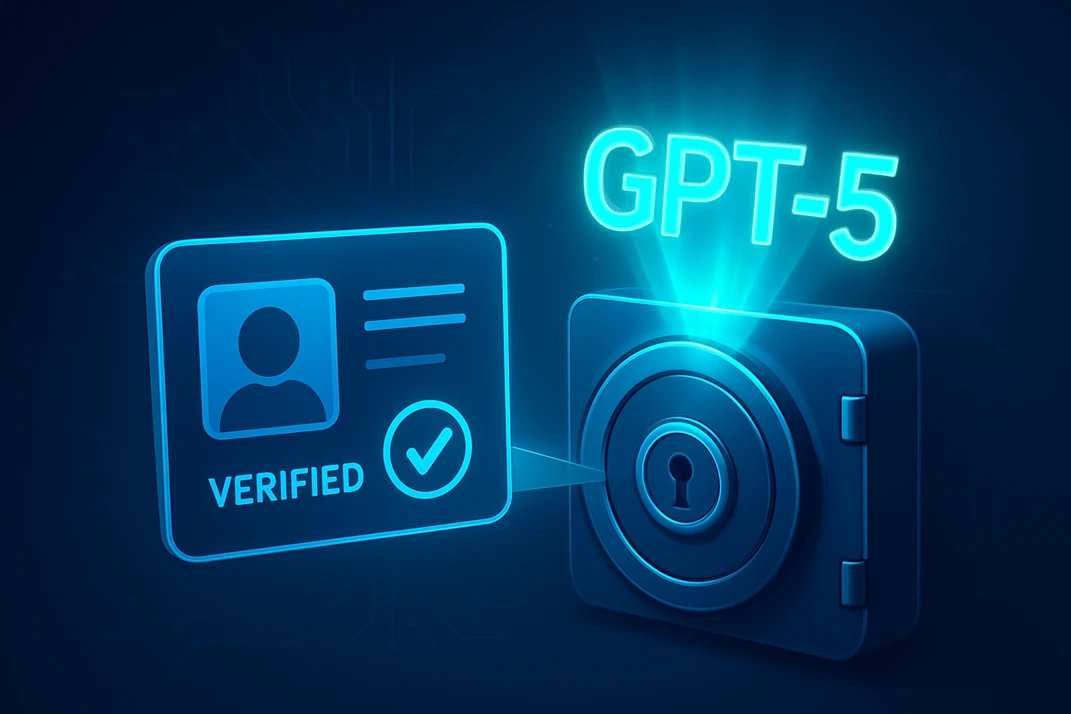OpenAI ID Verification for GPT‑5 Access: Step-by-Step Guide & FAQ
Estimated reading time: 17 minutes
Table of Contents
- Introduction: Why OpenAI ID Verification Now?
- What Changed: OpenAI’s New ID Verification for GPT‑5 Access
- Who Must Verify & How ID Verification Works
- Impact on Developers and Small Startups
- Enterprise: Governance, Audit & Procurement
- Privacy & Legal Compliance: GDPR, APPs & BIPA
- Security Essentials for OpenAI ID Verification
- Retention & Deletion: Data Minimisation
- Bias, Denials & Human Review (Fairness)
- How To Prepare: This Week’s OpenAI Verification Checklist
- Multi-Model & Provider Portability
- OpenAI ID Verification for GPT‑5: FAQ (Expanded)
- Get Expert Help: Lyfe AI Domain-Specific Models
- Closing Thoughts
Introduction: Why OpenAI ID Verification Now?
OpenAI ID verification for GPT‑5 is now a requirement for businesses and individuals looking to unlock advanced generative AI features. With increased capabilities, major models like GPT-5, and compliance requirements on the rise, OpenAI’s push for identity verification (IDV) aims to deliver safety, regulatory alignment, and stability for users large and small.
What Changed: OpenAI’s New ID Verification for GPT‑5 Access
- Required for new features: OpenAI ID verification is now essential for access to GPT‑5 and high-risk features.
- Model gating: Certain advanced modes—chain-of-thought, safe completions, “think” and “fast” routing—require user or business verification for access.
- Business/entity restriction: One verified government ID links to a single organisation with a cooldown before reuse for another entity.
- More robust process: Includes document upload, liveness/selfie checks, and anti-fraud screening.
Who Must Verify & How ID Verification Works
- Who must verify:
- Businesses integrating GPT‑5, especially via API or advanced features
- Developers and startups wishing to access “frontier” models
- Anyone requesting high-risk features (e.g. image, code, or voice)
- Workflow:
- Begin verification on your OpenAI dashboard or API portal
- Submit required documents (passport, ID, or driver licence) + live selfie
- Receive business/entity association and a cooldown clock before reuse
- Await approval (varies—plan for up to several days)
- Best practices:
- Incorporate formally and align IDs to entity
- Nominate an authorised verifier with notices and consent
Impact on Developers and Small Startups
- Friction and delays: Verification queues and cooldowns add time, which can stall launches and demos.
- One ID per organisation: Slow for teams managing multiple products/entities.
- Privacy and trust factors: Some find sharing biometrics/ID with third parties uncomfortable.
- Risk to product roadmap: Features may be dependent on verification status.
- Mitigations:
- Start verification early and create a fallback for delayed launches
- Communicate with users if features are blocked by verification status
- Consider multi-model support for business continuity
Enterprise: Governance, Audit & Procurement
- Positives: Audit trail for compliance, easier procurement, supports regulated workflows.
- Actions:
- Integrate IDV into IAM and risk processes
- Legal/security teams should approve IDV vendor and data flow
- Augment risk registers with IDV-specific considerations
- How to stay ahead:
- Routine vendor reviews, DPA/contract updates, and privacy/consent tracking
Privacy & Legal Compliance: GDPR, APPs & BIPA
- Biometrics = sensitive: Requires lawful basis and explicit consent (GDPR, Australian Privacy Act, US BIPA and state laws)
- Notice & consent: Update privacy and employee/contractor notices before rollout
- Retention/deletion: Must be deleted after verification or when no longer needed
- Transfers: Cross-border data transfers require valid mechanisms (e.g. SCCs, region selection)
- Vendor controls: Limit use of data to ID verification (no model training or ads), require deletion upon request
Security Essentials for OpenAI ID Verification
- Expectations: SOC 2 or ISO 27001 compliance, encryption in transit/at rest
- Breach controls: Require rapid notification and cooperation if incidents occur
- Least privilege: Minimise who views or manages sensitive IDV data
- Logging: Track admin actions and verification attempts
Retention & Deletion: Data Minimisation
- Short retention: Use auto-delete features (30–90 days recommended)
- Full deletion: Ensure full deletion after contract end or upon user request
- Data minimisation: Only collect and submit what is strictly necessary for IDV
Bias, Denials & Human Review (Fairness)
- Bias risk: Automated checks may generate false denials, especially for under-represented groups
- Human review: Ensure manual review and clear appeals path for failed verifications
- Logging: Track reasons for denials for accountability and improvement
How To Prepare: This Week’s OpenAI Verification Checklist
- Map all GPT‑5 usage and features that require verification
- Nominate and brief your business’s verifier/administrator
- Update privacy and consent documents
- Add fallback model(s) if verification fails or is delayed
- Create an internal runbook for appeals and troubleshooting
Multi-Model & Provider Portability
- Abstract away from one provider/API where possible
- Use wrappers or API gateways to allow easy fallback or failover to other AI vendors (Anthropic, Google, xAI, or open-source)
- Regularly test backup models for parity and performance
- Keep documentation and privacy/consent policies synchronised across your stack
OpenAI ID Verification for GPT‑5: Frequently Asked Questions
What is the first step to migrate to GPT 5 from previous OpenAI models?
Why is OpenAI requiring ID verification for GPT-5 access?
What information do I need to provide for OpenAI business verification?
How long does OpenAI ID verification for GPT-5 access take?
Can an individual developer verify multiple organisations for OpenAI GPT‑5?
How do I keep ID verification data safe and compliant?
Is biometrics required for OpenAI verification?
How is OpenAI verification different for large enterprises?
What happens if I don’t complete ID verification?
What privacy laws apply to OpenAI ID verification?
Can I switch back to another vendor if OpenAI verification blocks me?
Is OpenAI ID verification safe?
Get Expert Help: Lyfe AI Domain-Specific Models
Lyfe AI offers a suite of domain-specific AI models—custom-fit for industry, privacy, and compliance needs. For access, migration support, or advice on provider abstraction and verification, email human@lyfeai.com.au.
For subscription management, go to https://dashboard.stripe.com/login.
Closing Thoughts
Navigating OpenAI ID Verification for GPT‑5 access can be the difference between rapid innovation and missed launches. Risk-manage with preparation: verify early, update compliance docs, and keep options open with multi-model portability. The right approach will future-proof your AI journey—secure, compliant, and ready for whatever’s next.



